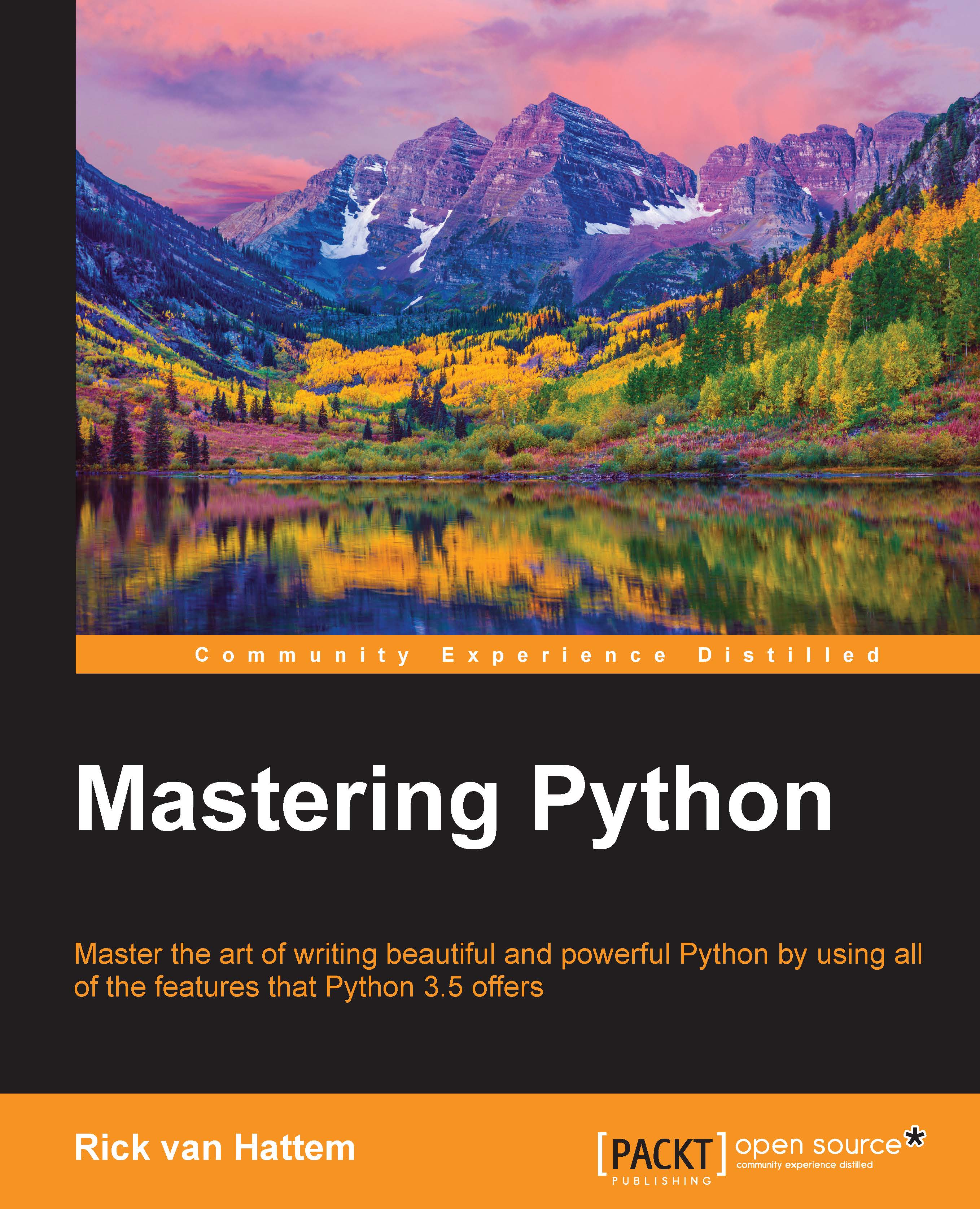The concept of design patterns
Finally, now is the time that we start talking about design patterns! What are design patterns?
Design patterns were first introduced by GoF (Gang of Four), where they mentioned them as being solutions to given problems. If you would like to know more, GoF refers to the four authors of the book, Design Patterns: Elements of Reusable Object-Oriented Software. The book's authors are Erich Gamma, Richard Helm, Ralph Johnson, and John Vlissides, with a foreword by Grady Booch. This book covers software engineering solutions to the commonly occurring problems in software design. There were 23 design patterns first identified, and the first implementation was done with respect to the Java program language. Design patterns are discoveries and not an invention in themselves.
The key features of design patterns are as follows:
- They are language-neutral and can be implemented across multiple languages
- They are dynamic, as new patterns get introduced every now and then
- They are open for customization and hence useful for developers
Initially, when you hear about design patterns, you may feel the following:
- It's a panacea to all the design problems that you've had so far
- It's an extraordinary, specially clever way of solving a problem
- Many experts in software development world agree to these solutions
- There's something repeatable about the design, hence the word pattern
You too must have attempted to solve the problems that a design patterns intends to, but maybe your solution was incomplete, and the completeness that we're looking for is inherent or implicit in the design pattern. When we say completeness, it can refer to many factors such as the design, scalability, reuse, memory utilization, and others. Essentially, a design pattern is about learning from others' successes rather than your own failures!
Another interesting discussion that comes up on design patterns is—when do I use them? Is it in the analysis or design phase of Software Development Life Cycle (SDLC)?
Interestingly, design patterns are solutions to known issues. So they can be very much used in analysis or design, and as expected, in the development phase because of the direct relation in the application code.
Advantages of design patterns
The advantages of design patterns are as follows:
- They are reusable across multiple projects
- The architectural level of problems can be solved
- They are time-tested and well-proven, which is the experience of developers and architects
- They have reliability and dependence
Taxonomy of design patterns
Not every piece of code or design can be termed as a design pattern. For example, a programming construct or data structure that solves one problem can't be termed as a pattern. Let's understand terms in a very simplistic way below:
- Snippet: This is code in some language for a certain purpose, for example, DB connectivity in Python can be a code snippet
- Design: A better solution to solve this particular problem
- Standard: This is a way to solve some kind of problems, and can be very generic and applicable to a situation at hand
- Pattern: This is a time-tested, efficient, and scalable solution that will resolve the entire class of known issues
Context – the applicability of design patterns
To use design patterns efficiently, application developers must be aware of the context where design patterns apply. We can classify the context into the following main categories:
- Participants: They are classes that are used in design patterns. Classes play different roles to accomplish multiple goals in the pattern.
- Non-functional requirements: Requirements such as memory optimization, usability, and performance fall under this category. These factors impact the complete software solution and are thus critical.
- Trade-offs: Not all design patterns fit in application development as it is, and trade-offs are necessary. These are decisions that you take while using a design pattern in an application.
- Results: Design patterns can have a negative impact on other parts of the code if the context is not appropriate. Developers should understand the consequences and use of design patterns.
 United States
United States
 Great Britain
Great Britain
 India
India
 Germany
Germany
 France
France
 Canada
Canada
 Russia
Russia
 Spain
Spain
 Brazil
Brazil
 Australia
Australia
 Singapore
Singapore
 Canary Islands
Canary Islands
 Hungary
Hungary
 Ukraine
Ukraine
 Luxembourg
Luxembourg
 Estonia
Estonia
 Lithuania
Lithuania
 South Korea
South Korea
 Turkey
Turkey
 Switzerland
Switzerland
 Colombia
Colombia
 Taiwan
Taiwan
 Chile
Chile
 Norway
Norway
 Ecuador
Ecuador
 Indonesia
Indonesia
 New Zealand
New Zealand
 Cyprus
Cyprus
 Denmark
Denmark
 Finland
Finland
 Poland
Poland
 Malta
Malta
 Czechia
Czechia
 Austria
Austria
 Sweden
Sweden
 Italy
Italy
 Egypt
Egypt
 Belgium
Belgium
 Portugal
Portugal
 Slovenia
Slovenia
 Ireland
Ireland
 Romania
Romania
 Greece
Greece
 Argentina
Argentina
 Netherlands
Netherlands
 Bulgaria
Bulgaria
 Latvia
Latvia
 South Africa
South Africa
 Malaysia
Malaysia
 Japan
Japan
 Slovakia
Slovakia
 Philippines
Philippines
 Mexico
Mexico
 Thailand
Thailand
















